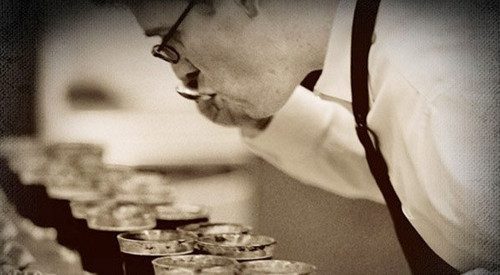A brief introduction to the Coffee Baking Book "the complete Book of Coffee roasting"
When the author published the first edition of this book in 1996, roasting coffee beans at home was something that only tireless coffee addicts would do. At that time, roasting coffee beans was a very difficult thing to master, and roasters had to work hard to find a way to roast coffee beans to a moderate brown.

Today, it is still not easy for individuals to roast coffee beans at home, but at least they must have sufficient background knowledge to help us explore this dark field. Now, people who want to roast coffee at home no longer need to knock and assemble homemade bean baking utensils, nor do they have to stir the coffee beans in the pan all the time; at least ten new household bean baking devices have quietly entered the market, and some coffee equipment stores are stepping into the market. Today, people who bake their own coffee beans at home no longer need to fight alone and talk to coffee beans alone (although a few of us still insist on doing so for health reasons), and there are many websites and chat rooms set up specifically for this ethnic group. let our enthusiasm for roasting coffee beans at home can resonate more.
However, roasting coffee beans at home is something that only a few people with strong enthusiasm can do, who start baking coffee beans themselves, which in turn arouses greater curiosity to explore a long list of underlying principles.
Baking coffee beans can be as simple as this: once you know what you're doing, the difficulty of "baking coffee beans at home" is between "boiling eggs" and "making great spaghetti sauce". In that case, why are there no more Dode people to play with their own hands? Why can't baking coffee beans at home be as common as baking cakes, snacks, making spaghetti and popcorn?
First of all, most people don't know how much coffee brewed from freshly roasted coffee beans can brighten people's eyes, which is different from the stale coffee they usually drink. But in a different place, almost everyone knows how delicious freshly baked bread is, and almost no one disagrees with their popcorn at home, which tastes like a big package of corn chewing rubber. However, the aroma of coffee beans drifting from the bean dryer has long been a yellow flower in most people's minds, and it is difficult to remember.
The second reason is that people don't know how simple and fun it is to bake coffee beans at home. Before advertising and convenience food became popular, it was almost a national movement.
Lettuce grows from the store?
I remember working as an instructor at a children's summer camp. One day, when I was hiking in the wild, I asked the children to eat a kind of edible wild vegetable (called "miner's lettuce" by Californians), but many children refused. The reason is that the wild vegetable leaves come from the soil, and there are many bugs on it. When I pointed out the fact that they had all eaten lettuce, which also grew from the soil, and had experienced the stage of being full of insects, one little girl retorted, "No!" Lettuce doesn't grow from the soil at all, it grows from the store! "
In the United States in the middle of the 20th century, most people thought that "coffee" was a brown grain that came out of a jar, rather than that coffee beans were made through several simple steps after drying the fruit from a tree. In the 20th century, a similar situation occurred in other food manufacturers. Where on earth did the coffee come from? The true face of its "source" is that coffee, like other agricultural products, has been processed by humans by drying, roasting, grinding, etc., but it has been replaced by some market-oriented alternative words, such as: "coffee" is a brown granule produced by a well-known large company using complex machines.... no, no, no.
Of course, in this era of brand image (about the 1960s), some of them, who were originally pure consumers, also began to engage in reverse movements such as cooking, making (brewing) wine, baking cakes and so on. In the world of coffee, the representative activity of reverse movement is the "boutique coffee movement" (Specialty-Coffee Movement). The main idea of the campaign is to revive the coffee culture of the 19th century-selling only freshly roasted coffee beans in bulk, and encouraging coffee lovers to buy unground beans as much as possible and grind them into powdered coffee before brewing. Because in today's United States, it is very rare to find a delicious lover who buys unground coffee beans and does not grind them before brewing.
There is no doubt that carefully roasted unground whole coffee beans have an absolutely overwhelming advantage in terms of delicious strength over the coffee formula sold in the supermarket. So, as long as you haven't experienced the taste adventure of boutique coffee, I suggest you start like this:
1. First buy the whole unground coffee beans from the local boutique cafe.
two。 Practice making a cup of coffee with proper grinding thickness and brewing.
3. Learn to experience the rich taste and the pleasure it brings to you.
However, for enthusiastic coffee enthusiasts to learn more about coffee beans for greater personal satisfaction, the next step is to start baking coffee beans at home.
Important Notice :
前街咖啡 FrontStreet Coffee has moved to new addredd:
FrontStreet Coffee Address: 315,Donghua East Road,GuangZhou
Tel:020 38364473
- Prev

Why roast coffee beans in the basics of coffee?
The raw coffee beans for export are not the dark brown beans we often see in cafes with a luster of vegetable oil and a burst of coffee-scented beans. Coffee beans can only be roasted to become coffee beans for grinding and drinking. Of course, this is just a strange modern way, because in the early days, Ethiopians used the fruits of coffee to make wine.
- Next

Reasons for roasting coffee beans by roasting yourself
So for those of us who didn't smell the aroma of roasted coffee beans when we were young, or those of us who lived in newly developed areas of the western United States and remembered only Pepsi and Maxwell instant coffee, what's the reason to bake coffee beans at home? Baking your own coffee beans is a simple thing, but it is also a forgotten art. Then why are we still here?
Related
- Beginners will see the "Coffee pull flower" guide!
- What is the difference between ice blog purified milk and ordinary milk coffee?
- Why is the Philippines the largest producer of crops in Liberia?
- For coffee extraction, should the fine powder be retained?
- How does extracted espresso fill pressed powder? How much strength does it take to press the powder?
- How to make jasmine cold extract coffee? Is the jasmine + latte good?
- Will this little toy really make the coffee taste better? How does Lily Drip affect coffee extraction?
- Will the action of slapping the filter cup also affect coffee extraction?
- What's the difference between powder-to-water ratio and powder-to-liquid ratio?
- What is the Ethiopian local species? What does it have to do with Heirloom native species?

